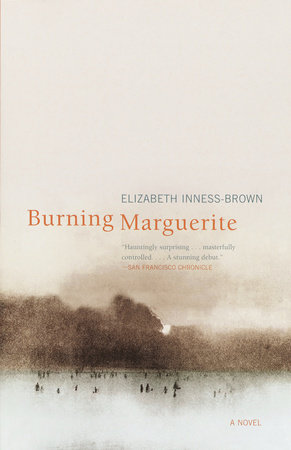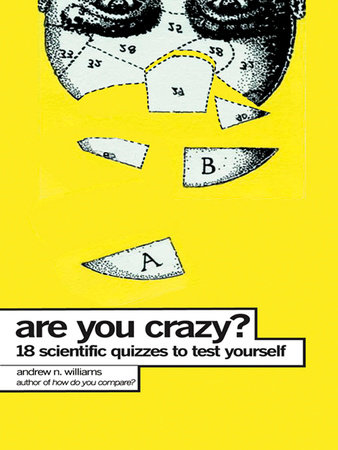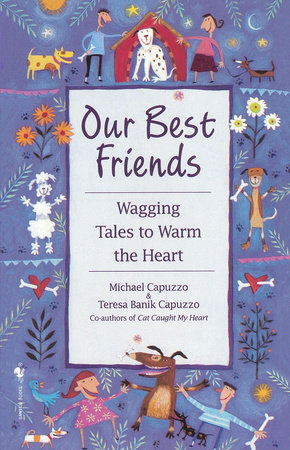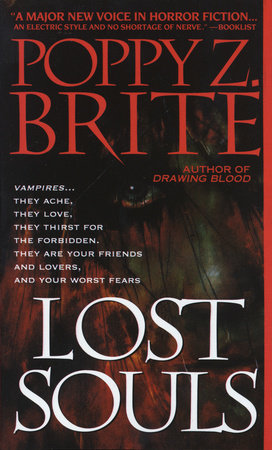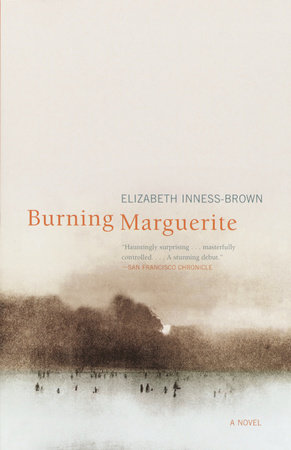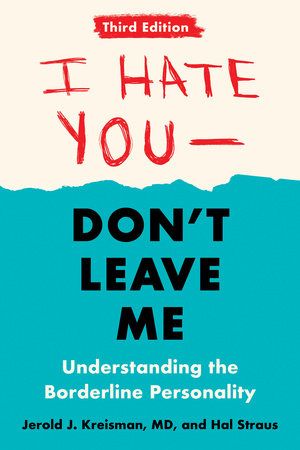Author Q&A
A Conversation with Elizabeth Inness-Brown, author of Burning Marguerite
Q: Where did you get the idea to write Burning Marguerite?
A: The idea for Burning Marguerite came from the writing itself. Originally I started with the notion of writing a book about a contemporary woman who discovers, in her thirties, that she is Native American. I myself had recently discovered that I am part Sioux, and I also know a local woman who in midlife discovered that she is Abnaki, which is a little-known northeastern tribe. I began writing random scenes, and I wrote them—dozens, maybe hundreds of pages—for three months, searching for the story. Then one day I wrote a scene in which a man goes into a sheriff’s office. I didn’t realize he was there to report finding a body until he opened his mouth to say so, but once he did, I suddenly had many questions: Who is the dead woman? Why was she in the woods? What is this man’s relationship to her? Why has he come to report this to the sheriff? And as I started to answer those questions—again, by writing scenes—the "idea" for the novel took shape.
The day I sat down and began to write in Marguerite’s own voice, she took over. Her voice flowed from me so easily, it was as if I had tapped into a former life, as if I were truly listening to her speak to me from beyond death. The novel evolved fairly quickly from there, and the original idea pretty much got left in the dust.
Q: Marguerite is a compelling and complex character, a strong, independent woman who in many ways seems before her time. What inspired her character?
A: Parts of Marguerite, like parts of every character in the book, come from specific people in my life; parts come from me, and parts are imagined, of course. Marguerite is named after Marguerite McKee, an elderly woman who was my next-door neighbor when I first moved to Vermont. The real Marguerite was completely blind, and toward the end of her life suffered from small strokes that took away all her memories except those from her youth, which she relived as if they were at that moment happening. When I went to visit her, she would narrate what she was seeing—and as she spoke, she really was seeing those memories, she was no longer blind. She was living in her mind’s eye. I think perhaps it is this idea and this narrative voice that I tapped into as I was writing Marguerite Deo, although I certainly didn’t realize it until much later.
Other parts of Marguerite come from my mother-in-law, Emily Ellis, who died about a year ago. At the end of her life, she was as frail as one could imagine, yet she was always intent on not being a burden to her sons, just as Marguerite doesn’t want to be a burden to James Jack. And as I write this, I realize that yet another part of Marguerite comes from my grandmother, Virginia Royall Inness-Brown, who died quite a while ago, but whose imperiousness, command of situations, and beauty Marguerite definitely shares.
As for the parts that come from myself, during the writing of this book I was trying to have a child of my own, and I found myself using Marguerite as a way to imagine how I would bring up that child—what values I would teach, what ideas, what I would teach him to appreciate and love. The summer after I finished the first draft, I did in fact become pregnant, and I gave birth to a son, Michael, a month before my forty-fourth birthday. And now I do, in fact, often find myself living out the role I imagined for Marguerite. More surprisingly, when I returned to the book to revise it, I also discovered just how accurately I had imagined, for Marguerite, the experience of mothering a small child.
Q: Do you see Marguerite as being representative of her generation of American women?
A: I would not have said so—I would have thought she was an anomaly—until I asked a professor friend of mine, Susan Ouellette, to read the book. She is a historian with a specialty in American women; like Marguerite, she also happens to be part Native American and part French Canadian. In her response to the book, she wrote: "As a women’s historian, I think that the first quarter of the century was a curious time when women had a little bubble of opportunity that then evaporated in the Depression. By the late 30s, the women who came of age in the earlier decades had become ‘characters’ with ‘strange’ habits like being self-sufficient and less sexually repressed." It seems that completely by accident I created a character who, in fact, is representative of her time. As I was writing her, though, I thought only of making her a strong person, a survivor, a fighter, someone who strives to make a decent life no matter what befalls her. I wanted her to be someone I admired, and she is.
Q: Burning Marguerite spans the 20th century and moves from New England to New Orleans and back. What sort of research did you do, and did you always feel comfortable writing about such a considerable span of time and generations?
A: I really never intended to write a novel that was in any way historical because I am a terrible student of history, but once Marguerite started talking, I obediently wrote down what she said, relying on imagination rather than research to lead the way. However, I’m smart enough to know that I should check facts, so I did. I read reference books about ice fishing, Native Americans, Vermont, Prohibition, and World War II. I watched documentary videos about Vermont history. I attended part of a course in Abnaki science. I asked friends to read the book or parts of it and check it for verisimilitude. I had a firefighter read the firefighting section. I had an ice-fishing native Vermonter read the whole book for authenticity and went ice fishing with my father. I contacted a librarian friend and asked him questions about New Orleans history and place names. I did research on the internet about French and Catholic names, and asked French-speaking friends about pronunciations and meanings. Try as I might to keep the factual references minimal—and try as I might to use my actual experiences of those places rather than invent things—I found I had to do quite a lot of research to make sure everything was accurate. I’m still crossing my fingers that it is. So the answer to the second part of your question is yes and no: I always felt comfortable when I was writing in Marguerite’s voice—I seemed to know her from the inside out—but I never felt completely sure of myself when it came to the history and other factual matters, which I tried to check as thoroughly as I could.
Q: You live on an island in Lake Champlain. Is the novel’s island modeled after your own? The attitudes of its residents? Its history?
A: When I started the novel, we had only just recently moved to the Champlain Islands, and yes, I was very intrigued by the islands and so naturally found myself using them as the setting. Three islands, plus a peninsula, make up Grand Isle County of Vermont: South Hero, North Hero, Isle La Motte, and Alburg. In the book, Grain Island is a fictional combination of all four areas, using geographic and cultural elements from each, including their history. We travel over a causeway to get to Burlington, which is Vermont’s largest city, but I removed the causeway from Grain Island to make it more isolated. Marguerite’s house is based on several different stone houses hereabouts, but it’s located in yet another place. The trailer where James’s parents lived is based on a trailer down my road, but it’s not located there in the book. In short, if you tried to "walk the island" following clues gleaned from the book, you would get very lost.
But culturally Grain Island is very similar to reality, except that it’s less insular (and our general store doesn’t increase prices in the summer!). Ice fishing is very popular here; the lake in the book is very much like Lake Champlain. And the mix of people—French Canadian, Abnaki, English-Scotch-Irish—is very real, as are the changes the islands have undergone over the years, in terms of tourism, real-estate values, schools, and so on. Yet the Champlain Islands remain very much a rural, rustic place. We ourselves live on a dirt road with no neighbors in sight, and down the hill from us is a working dairy farm. When someone around here asks me what the book is about, my short answer is often "the Islands." It’s as much a book of place as a book of character.
Q: Central to Burning Marguerite are issues of love, partnerships, sexuality, fertility, and parenting. Why are these important for the story and for you as a writer?
A: Like many women of my generation, I put off even considering having a child until quite late in life. By the time I began writing the book, though, it had become an urgent desire. I didn’t intend to write about that at all, but as the book evolved, there it was. My experiences, my feelings, my internal debate clearly influenced the writing of the various characters in the book who are also struggling with that desire.
More important than that, though, I think I was also writing about the loss of one’s parents. My own mother died—a suicide—when I was eleven years old. This is something I have stringently avoided writing about all my life, not wanting to making capital of it and perhaps not being able to. But late into the writing of this book I realized that that, too, was an element here.
Right from the beginning I had it in my head, too, that each of my characters should find some happiness in love. It only seems fair. It’s what every person wants, needs, and deserves.
Q: Can you talk a little bit about the elements of the forbidden in your story—a relationship between a white woman and a Native American man considered beneath her class, another between two women, an illegal abortion/sterilization, a single mother raising a child in the 60s, etc.?
A: Ah, yes. Well. Isn’t forbidden fruit always sweetest? For the novelist as for anyone else. For the novelist, the forbidden hides within it conflict, which is the source of story; I think it was Kurt Vonnegut who said that to write a story, you have to make someone want something they can’t have. For humanity, as for my characters, reaching for the forbidden is a way to get that thing that they want—which often turns out to be something that should not, in any case, be forbidden. Like happiness.
I was about to say that it is rather sad, from a novelist’s perspective, that so few things are forbidden us anymore, and that perhaps this is why so many writers reach into the past for stories. But there still are and always will be so many "forbiddens"—if not forbidden by law or culture, then forbidden by families, by spouses, by nature, by events beyond our control. I don’t think we will ever run out of forbiddens.
Q: Burning Marguerite is full of vivid natural details–fire and ice, poisonous and life-giving flowers, the forest, the lake. What role does nature play in your story?
A: The same role it plays in my life. I am fascinated by nature, in love with it, a student of it. I live in the country, surrounded by trees, the lake, my gardens, animals, the weather, and I love nothing more than to be outdoors, looking, touching. It feeds me. But when I write, I have to sit inside, at a desk, for long periods of time. To bring the outdoors inside, I put it into my story. And vice versa: Every time I went outside while I was writing the book, I came back in with a new detail to add somewhere. I wanted very much to capture the invigoration that being outside gives me, to capture the blusteriness of this island, the wildness of it, the scruffiness of it—to capture the seasons, too, the bitterness of winter, the sweetness of spring, the overabundance of summer, the poignancy of fall.
A lot of it also comes from my occasional studies of Native American beliefs and practice. I wanted Marguerite to draw unconsciously from her own Abnaki background, to tap into that ancestry almost without awareness. A lot of the imagery comes from that and is used quite deliberately. I am anxious to see how Native Americans read the book, if they see what I tried to do.
Q: Marguerite’s life, and the structure of your novel, is symbolized in Judith’s quilts and the paintings on which Marguerite works while in New Orleans. Why are these important symbols for Marguerite and the novel?
A: The use of the word "symbol" makes me nervous. As I wrote this book, I tried very hard to make sure that everything I put in could be read literally first and foremost—that is, I didn’t want to play any games with the reader. But I suppose that is a self-delusion on my part: of course a novel is a construction, some things chosen and some things left out, and ultimately even I hope that the novel can be read on several levels. That said, of course there is a quilt-like quality to the structure of the book; why didn’t I see that sooner? For me it was only a problem of organization, but yes, right from the start I was patching it together, trying by its very structure to show how these lives connected, interwoven.
To be honest, though, to me Judith’s quilts and Marguerite’s paintings represent more than anything the fruition both of their individual talents and that of their friendship. Together they create a safe haven in which each of them can "flower," pardon the pun. They cherish, support, and nurture one another. Perhaps this is why Marguerite ultimately gives up her art: she no longer has someone in her life who makes that possible for her. Or perhaps she gives it up because James Jack needs her more than she needs art.
Q: You employ some interesting stylistic techniques in Burning Marguerite. Why did you choose to open each chapter with an italicized section in Margureite’s voice when many of the chapters are writing from her first-person point of view?
A: All of the stylistic elements seemed, at least initially, to happen in and of themselves. I think the very first section I wrote in Marguerite’s voice is what now appears as the very first section of the book. And even as I wrote it, I felt compelled to use italics. There was something about the "whispering" feeling that italics can give a passage that allowed me to tap into her voice. For a long time I wrote all of her sections in italics. The ones that remain that way represent, for me, bridges between the chapters—clues, maybe—a kind of connective tissue to bind the book together. Or perhaps the thread, to go back to the quilt metaphor. And those sections can be read, quite literally, as her "voice" as she is dying.
Q: Burning Marguerite is your first novel. What was it like to switch from short story to novel writing?
A: It was very difficult until I realized that I could in fact write a novel using the same method I use for short stories, and that is: Just write, and let the story emerge. It took me many years to figure that out, and many years to develop the patience to let that happen with something as long as a novel. I can do a draft of a short story in a day; it took about five months to come up with even the roughest of drafts for a novel. Patience is the main difference, which for me means trusting the process.
Q: Who are some of your influences and what advice would you give to aspiring writers?
A: Probably my biggest and earliest influence is Colette—there was a woman ahead of her time! I also love Annie Proulx, Carol Shields, Tom McGuane, Marilynne Robinson. These are the kinds of books that I keep nearby as I am writing, to dip into whenever I need a shot of good, sensual prose, prose that you can dig your teeth into.
I teach writing, so I am just plumb full of advice to aspiring writers. I preach patience and persistence. Be patient with the writing; focus on the moment, don’t get ahead of yourself, make each sentence good, don’t worry about the end result before it’s time to. Be patient with the publishing process, too; don’t go there till you’re ready, don’t rush it, don’t settle. But be persistent: sit down and don’t get up till you’ve done something. Keep at it. Be disciplined. Work hard. And most of all, enjoy the process. Writing a novel is like solving a puzzle: you just have to keep at it till it’s done, but it feels so good when you get there.
